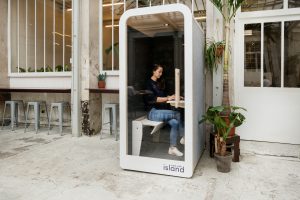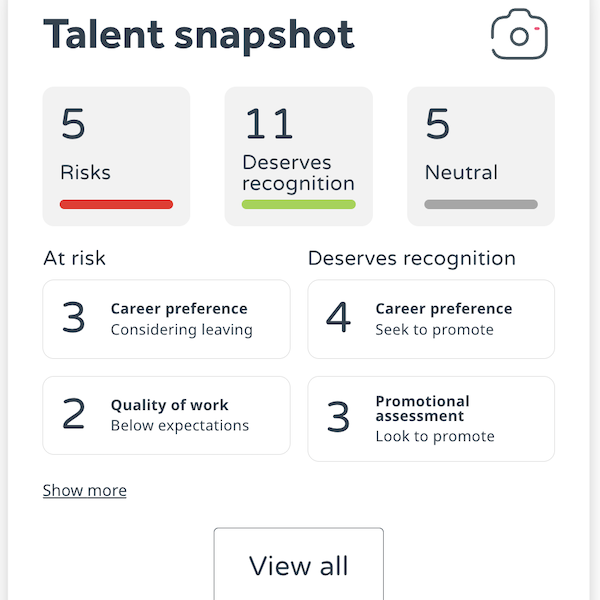Approximately 9.5 million jobs, from 1.2 million different employers were furloughed in the UK as part of the government’s job retention scheme.
As the scheme winds down, business leaders are faced with the imminent task of managing the return of their furloughed employees.
So, how can employers ensure the smooth integration of furloughed staff coming back to work? This blog explores some of the essential steps employers can take to ensure reintegration restores confidence, motivation and productivity in returning employees. Effective leadership, trust and careful planning are key.
First up, a quick recap of the job retention scheme and how it will be wound down.
9.5 million jobs furloughed in UK government’s job retention scheme
The job retention scheme
As the UK locked down in response to the Coronavirus (COVID-19) pandemic, Chancellor, Rishi Sunak, put in place an ambitious economic support package. The job retention scheme allowed employers to furlough employees with the government stumping up 80 percent of an employees’ usual monthly wage, up to a maximum of £2,500 per month. The scheme, a lifeline to businesses in such an unprecedented situation, enabled employers to keep employees they would have otherwise laid off.
Recent changes to the job retention scheme mean that furloughed employees can now go back to work part-time (days employees are not working are still covered by the scheme).
From August, employers share the cost of the scheme, which is due to end in October. The government will be tapering its contribution through September to 70% of an employees’ salary and October to 60% of an employees’ salary. From 1st November there will be no further contributions. Businesses will then be back to shouldering the full cost of their employees.
Employers are also being offered a sweetener of £1,000 (per employee) to retain those returning from furlough until January 2021. This is largely to avert employers laying off staff as soon as the furlough scheme ends.
So, for employees coming back from furlough, what will work look like?
The new workplace normal
As well as the reintegration of furloughed employees, businesses are also faced with changes to the guidance about working from home. From the 1st August the Government changed its advice to allow employers discretion over whether to ask staff to go back in to work.
Global HR lawyers, Lewis Silkin, say employers have 3 options when it comes to recalibrating the workplace. These are:
- Re-open the workplace with mandatory attendance
- Re-open the workplace with optional attendance
- Remain closed with employees continuing to work from home
Business leaders must decide on a strategy that combines both business and employee needs.
Remote working or back to the office?

Up until the end of July, official guidance has recommended that if employees are able to work from home, they should do. From the 1st August, employers can ask employees to return to the workplace. This is provided they have taken steps to ensure the work environment is Covid-19 secure.
Forbes reports that remote work has proved a critical enabler of business and economic continuity during the lockdown. Now that it has been proven to be possible, many businesses will be reassessing what the future workplace looks like.
A recent report by Gartner revealed three-quarters of employers intend to shift some of their workforce to permanently work from home.
Three-quarters of employers want some of their workforce to permanently work from home
Employers shouldn’t be making rash decision about getting everyone back in the office. If home working has proved successful with non-furloughed employees, there is no reason to fast-track a back-to-the-office plan. People coming back from furlough could work from home too.
Understanding individual needs
Employers are facing huge challenges, from the viability and sustainability of business to implementing COVID-compliant health and safety rules, as well as managing the expectations and worries of staff.
Everyone being asked to return to the workplace will have a different set of needs and a different back story, whether they have been furloughed or have been working from home. Overseeing a coherent and cohesive plan will require careful management. Business leaders need to listen to employees.
The Chartered Institute of Personnel Development (CIPD) urges employers to consider three key tests before bringing their people back to the workplace. Is it …
- essential?
- sufficiently safe?
- mutually agreed?
To build trust, listening to employees is crucial. Every back-to-work plan should include regular employee surveys. Change under the most positive of circumstances can be unsettling. Amidst a global pandemic, many staff will be feeling anxious about their return to work. Even if returning employees aren’t worried about the virus, they may be worried about job security.
Preparing the workplace for a safe return

Employee engagement relies on people feeling safe. Employees will need clarity, reassurance and have confidence that employers are keeping them safe and protecting their well-being. Consulting with employees will help to identify hazards, potential problems and help employers come up with solutions. Employees will be motivated and engaged if they are involved.
There has never been a more apt time for employers to invest in mental health. Anxious employees will be far less productive and much more likely to take time off sick.
Furloughed employees, suddenly cut off from normal working life, have had to adjust to a significant change. Some have welcomed the time off work, while others have struggled. Returning to work will be a different experience for everyone. Employers need to understand this and prepare for it.
If employees returning to work from furlough will be working from home, employers will need to ensure all practical measures are in place, such as equipment, and guidance on communication tools etc.
Dealing with disputes
It is critical that employers recognise the many potential areas that might cause dispute. Staff need guidance and rules to be laid out clearly, so that expectations are understood. Signs and notices should be put up to help employees comply with any new rules within the workplace.
There will be many questions that furloughed employees will want answered as they return to work. Employers should seek advice before dealing with disputes and ensure they understand employees’ rights.
Particular care should be taken when dealing with employee objections to returning to the workplace, especially if they are vulnerable or shielding and rely on public transport, or if they have no childcare.
Supporting staff as they navigate change is imperative.
Consider a re-induction process
A re-induction process for employees returning to work after furlough is a sensible idea and is likely to be hugely valuable to engagement and productivity. Managers should schedule individual meetings to welcome returning employees and discuss health and safety, and work expectations – as well as finding out if there are any additional support needs required to ensure staff feel able to return to work and do their jobs.
It is also an opportunity to update employees on any changes to work duties and explain any company or department issues. It may be that hours or job roles have changed and this needs to be explained fully to returning employees.
Communicate, communicate, communicate
Returning to work from furlough for many will inevitably involve some worry and potentially lead to stress. Communication is THE most important thing employers can focus on. It is only through clear dialogue that potential problems can be shared, discussed and managed. Flexibility and understanding are key.
A smooth transition will rely on knowing how your employees are feeling. The easiest way to monitor this is through an employee survey. We Thrive offers a comprehensive employee engagement survey designed to help you understand pinch points and a suite of tools to help you deal with problems swiftly and keep productivity on track. Contact our expert team now to get the rich actionable data you need to make your business a success.



